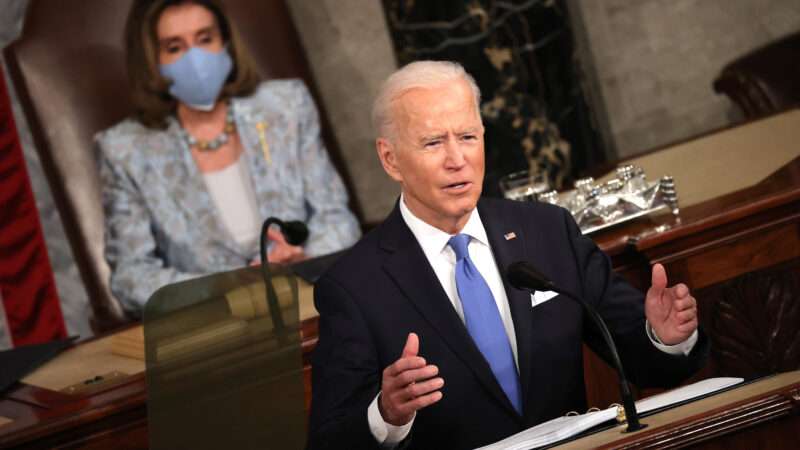The Supreme Court issued a single opinion today in Niz-Chavez v. Garland, in which the Court considered the adequacy of a “notice to appear” to a deportation proceeding was legally adequate if the notice did not contain all of the statutorily specified information. This matters because a nonpermanent resident aliens otherwise subject to removal may be eligible to remain in the country if they can establish they have been in the country continuously for at least ten years. A notice to appear, however, effectively cuts off the running of this time period. So, in this case, whether the government’s notice to appear to Niz-Chavez was adequate would determine whether he is potentially eligible for discretionary relief from deportation.
In a 6-3 decision, the Court held that the government had not provided Niz-Chavez with a statutorily adequate notice to appear because no single document sent to Niz-Chavez contained all of the required information. Justice Gorsuch, wrote for the Court, joined by Justices Thomas, Breyer, Sotomayor, Kagan, and Barrett. Justice Kavanaugh dissented, joined by the Chief Justice and Justice Alito.
We may think of this as a 6-3 Court, but this is not the 6-3 split many would expect. That said, there is something intuitive about this split, in that it resembles the formalist-pragmatist splits we’ve sometimes seen on the Court before, in which more formalist conservatives (e.g. Thomas, Scalia) would join with the Court’s liberals to side with criminal defendants. In this case, the Court’s more formalist/textualist conservatives (Gorsuch, Thomas, Barrett) joined with the Court’s liberals to hold that if the statute requires “the notice” to contain certain information, the failure of a single notice to contain that information renders it deficient, while the Court’s more pragmatic conservatives (Kavanaugh, Alito, and the Chief) dissented on the grounds that this imposes an unreasonable burden and ignores that, as a practical matter, notice of all the relevant info was provided, even if not in a single document. So, while we have not seen this precise lineup before, I would not be at all surprised were we to see it again, particularly in areas such as immigration.
Justice Gorsuch’s majority opinion begins in fairly typical Gorsuch style.
Anyone who has applied for a passport, filed for Social Security benefits, or sought a license understands the government’s affinity for forms. Make a mistake or skip a page? Go back and try again, sometimes with a penalty for the trouble. But it turns out the federal government finds some of its forms frustrating too. The Illegal Immigration Reform and Immigrant Responsibility Act of 1996 (IIRIRA), 110 Stat. 3009–546, requires the government to serve “a notice to appear” on individuals it wishes to remove from his country. At first blush, a notice to appear might seem to be just that—a single document containing all the information an individual needs to know about his removal hearing. But, the government says, supplying so much information in a single form is too taxing. It needs more flexibility, allowing its officials to provide information in separate mailings (as many as they wish) over time (as long as they find convenient). The question for us is whether the law Congress adopted tolerates the government’s preferred practice.
As noted above, the majority concludes the answer is “no” The plain text of the statute indicates as much and, as the Court had noted previously in Pereira v. Sessions, the statutory requirements for notices to appear at deportation proceedings mean what they say.
Gorsuch reaffirms the need to interpret statutes in accord with their “ordinary meaning”:
When called on to resolve a dispute over a statute’s meaning, this Court normally seeks to afford the law’s terms their ordinary meaning at the time Congress adopted them. See, e.g., Wisconsin Central Ltd. v. United States, 585 U. S. ___, ___ (2018). The people who come before us are entitled, as well, to have independent judges exhaust “all the textual and structural clues” bearing on that meaning. Id., at ___ (slip op., at 8). When exhausting those clues enables us to resolve the interpretive question put to us, our “sole function” is to apply the law as we find it, Lamie v. United States Trustee, 540 U. S. 526, 534 (2004) (internal quotation marks omitted), not defer to some conflicting reading the government might advance. . . .
And this, Gorsuch notes, presents a problem for the government:
To trigger the stop-time rule, the government must serve “a” notice containing all the information Congress has specified. To an ordinary reader—both in 1996 and today—”a” notice would seem to suggest just that: “a” single document containing the required information, not a mishmash of pieces with some assembly required.
The majority opinion concludes:
At one level, today’s dispute may seem semantic, focused on a single word, a small one at that. But words are how the law constrains power. In this case, the law’s terms ensure that, when the federal government seeks a procedural advantage against an individual, it will at least supply him with a single and reasonably comprehensive statement of the nature of the proceedings against him. If men must turn square corners when they deal with the government, it cannot be too much to expect the government to turn square corners when it deals with them.
Writing in dissent, Justice Kavanaugh argues that the majority’s interpretation is “perplexing as a matter of statutory interpretation and common sense.” He argues that the majority’s interpretation is unreasonable, and fails to accord proper deference to the political branches. His opinion concludes:
As a matter of policy, one may reasonably debate the circumstances under which a noncitizen who is unlawfully in the country should be removed and should be eligible for cancellation of removal. But those policy choices are for the political branches. Our job is to follow the law passed by Congress and signed by the President. The statute here requires the Government to serve the noncitizen with written notice of the charges and other required information, including the time and place of the hearing. In this case, Niz-Chavez received written notice of the charges and all the required information, including the time and place of his hearing. Niz-Chavez appeared with counsel at his hearing in Detroit on June 25, 2013. Because he received written notice to appear before he had accumulated 10 years of continuous physical presence, he is not eligible for cancellation of removal
from Latest – Reason.com https://ift.tt/3xBoUev
via IFTTT

